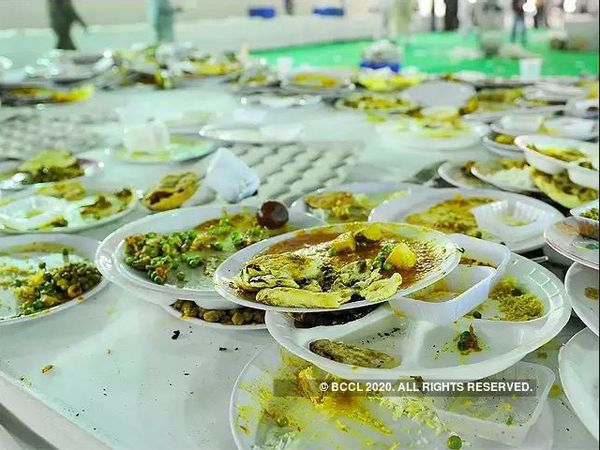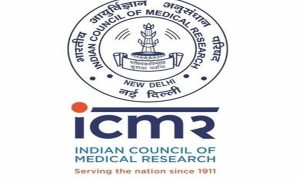Today is World Food Day. For those who may not be aware of the fact that such a day exists, it is an international day celebrated every year around the world on 16 October in honour of the date of the founding of the Food and Agriculture Organization of the United Nations (FAO) in 1945. FAO is a specialized agency of the UN that leads international efforts to defeat hunger.
The organisation’s main goal is to achieve food security for all and make sure that people have regular access to enough high-quality food. With over 194 member states, FAO works in over 130 countries worldwide.
Having food is something to celebrate but have you ever wondered consciously just much food you waste. Have you ever stopped to analyze just how much food is wasted in your household, society, country and the world? It is not something that people, who have food readily available whenever they feel hungry, worry about. However, for people who are not even able to eat one meal a day, often wonder if all the food that is being wasted around them on a daily basis could have filled their stomach.
Food waste is an issue of importance to global food security and the environment. But what a lot people may not realise is that is impacts a country’s economy as well. Every day, food suitable for human consumption is wasted in large quantities in medium and high-income countries at the retail and consumer level. In fact, a significant food loss and waste occur at the production to processing stages in the food supply chain in low-income countries.
Food Wastage in India:
Contrary to the belief of Indians that we don’t waste food, data showed that India wastes as much food as the whole of United Kingdom consumes. In fact, food wastage is an alarming issue in India and country’s streets, garbage bins and landfills have sufficient evidence to prove this. According to the United Nations Development Programme, up to 40 per cent of the food produced in India is wasted and about 21 million tonnes of wheat are wasted annually.
You don’t even have to scour through several resources to see how much food is wasted in the country. During the nationwide lockdown this year, India registered high wastage because of a poor supply chain. Food delivery website MilkBasket lost 15,000 litres of milk and 10,000 kg of vegetables in a single day after delivery agents were denied entry in societies due to lockdown. Farmers in Belagavi district of Karnataka spilt thousands of litres of milk in a river after they could not reach the people due to the lockdown. Several other reports surfaces which showed how much food was wasted.
Food Wastage stats:
- Around 67 million tonnes of food is wasted in India every year which has been valued at around Rs 92,000 crores. For context, this amount is enough to feed all of Bihar for a year
- Annually, nearly 21 million metric tonnes of wheat rots in India. This figure is equal to Australia’s total annual production
- According to old 2018 BMC data, Mumbai generates close to 9,400 metric tonnes of solid waste per day, from which 73% is food, vegetable, and fruit waste, while only 3% is plastic.
- National Delhi also generates around 9,000 metric tonnes of waste per day, with the country’s largest landfill located in East Delhi.
Economic Impact:
Food Wastage not only leads to negative environmental impact but also causes economic loss. According to an FAO report, approximately one-third of all food produced for human consumption is lost or wasted. The economic costs of this food wastage are substantial and amount to about $1 trillion each year. However, the hidden costs of food wastage extend much further. In addition to the $1 trillion of economic costs per year, environmental costs reach around $700 billion and social costs around $900 billion.
Global food wastage costs as per FAO report:
- 3.5 Gt CO2e of greenhouse gas emissions. Based on the social cost of carbon, these are estimated to cause $394 billion of damages per year.
- Increased water scarcity, particularly for dry regions and seasons. Globally, this is estimated to cost $164 billion per year.
- Soil erosion due to water is estimated to cost USD 35 billion per year through nutrient loss, lower yields biological losses and off-site damages. The cost of wind erosion may be of a similar magnitude.
- Risks to biodiversity including the impacts of pesticide use, nitrate and phosphorus eutrophication, pollinator losses and fisheries overexploitation are estimated to cost $32 billion per year.
- Increased risk of conflict due to soil erosion, estimated to cost $396 billion per year.
- Loss of livelihoods due to soil erosion estimated to cost $333 billion per year.
- Adverse health effects due to pesticide exposure, estimated to cost $153 billion per year.
Earlier this year, former Union Minister of Consumer Affairs, Food and Public Distribution Ram Vilas Paswan said that in financial year 2019-20, foodgrain wastage in the country stood at 1,930 tonnes, which was 0.002 per cent of the total procurement. The total procurement in FY 2019-20 was 751.72 LMT (Lakh Metric Tonnes). The minister shared the data on Twitter and asserted that the notion that foodgrain wastage is high in FCI (Food Corporation of India) godowns is not true. While he was right, the truth is that over a thousand tonnes of foodgrains was wasted which could have fed millions of people.
Now that it is clear that food wastage cripples a country’s economy to an extent that most are unaware, some measures that the government needs to take is to include containing wastage in transportation, improve storage facilities. Food processing also needs to be sped up so food is saved and wasted less to feed more.
What you can do?
While government intervention is necessary to contain the wastage, the citizens also play a significant role. There is so much that you can do on a more personal level to contain the food wastage. Here are some ways you can reduce food wastage on a personal level:
- Plan out your meal and make your shopping list in advance to determine what you actually need. Earlier data suggested that about 20% of what we buy in urban India ends up being thrown away. You could cut down on the surplus and contain wastage.
- Buy in quantities you can realistically use. Avoid impulse buys because it will more or less find itself in the bin.
- If you cook at home, make sure you cook keeping in mind there is no excess. In case you end up making more food than what can be consumed, do not throw it away. Feed someone around you who needs that meal.
- Select according to their shelf life. Use green vegetables first so that they do not get bad. Don’t throw out fruits and veggies with ‘aesthetic only’ blemishes. Use canned and bottled food before expiry dates.
- If you work in an office that has a canteen, you can check with them on how they manage excess food. Cooked food, especially since it has a low shelf life needs to be managed better and faster. Check with NGOs who offer to transport excess food to the needy.
- Also, if you host a family get together either at home, a marriage hall or throw a party at a hotel, make sure you plan for the food to be transported to a place like an orphanage or an old age shelter.






















 WhatsApp us
WhatsApp us
Pingback: deep sleep
Pingback: https://www.heraldnet.com/reviews/phenq-reviews-is-it-legit-update/
Pingback: Atomic strive 12 gw binding adjustment
Pingback: where to get psilocybin capsules
Pingback: ทีเด็ดฟุตบอล